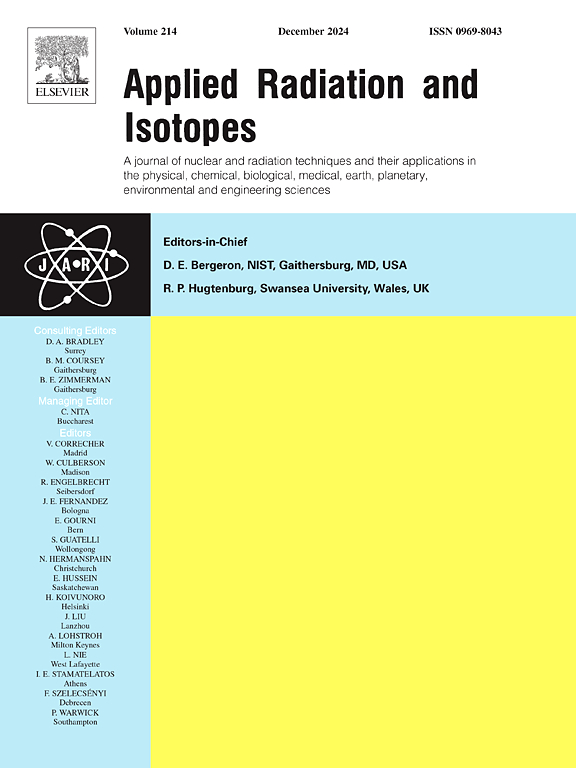Annual effective dose assessment of radon concentration in spring and ground water for the population of Devprayag region in Uttarakhand Garhwal Himalayas
IF 1.6
3区 工程技术
Q3 CHEMISTRY, INORGANIC & NUCLEAR
引用次数: 0
Abstract
Radon measurement in the Himalayan region is crucial due to the unique geological composition that may lead to elevated radon levels in water sources, posing potential health risks to the local population. This study focuses on radon concentration in drinking water collected from 13 spring water samples and 13 groundwater samples (via hand pumps) across various locations in the Devprayag region. Radon levels were assessed using the SMART RnDuo continuous radon monitor. The concentration in spring water varied between 0.7 Bq/L and 64.4 Bq/L, while groundwater levels ranged from 0.6 Bq/L to 79.5 Bq/L. Although the radon levels in the samples fell within the safe limits set by the World Health Organization (WHO), the estimated annual effective dose from radon ingestion and inhalation surpassed the WHO's safety threshold of 100 μSv/year in several areas. These results highlight the necessity of ongoing radon monitoring in the region to reduce long-term health risks and guide safety standards for drinking water.

求助全文
约1分钟内获得全文
求助全文
来源期刊

Applied Radiation and Isotopes
工程技术-核科学技术
CiteScore
3.00
自引率
12.50%
发文量
406
审稿时长
13.5 months
期刊介绍:
Applied Radiation and Isotopes provides a high quality medium for the publication of substantial, original and scientific and technological papers on the development and peaceful application of nuclear, radiation and radionuclide techniques in chemistry, physics, biochemistry, biology, medicine, security, engineering and in the earth, planetary and environmental sciences, all including dosimetry. Nuclear techniques are defined in the broadest sense and both experimental and theoretical papers are welcome. They include the development and use of α- and β-particles, X-rays and γ-rays, neutrons and other nuclear particles and radiations from all sources, including radionuclides, synchrotron sources, cyclotrons and reactors and from the natural environment.
The journal aims to publish papers with significance to an international audience, containing substantial novelty and scientific impact. The Editors reserve the rights to reject, with or without external review, papers that do not meet these criteria.
Papers dealing with radiation processing, i.e., where radiation is used to bring about a biological, chemical or physical change in a material, should be directed to our sister journal Radiation Physics and Chemistry.
 求助内容:
求助内容: 应助结果提醒方式:
应助结果提醒方式:


